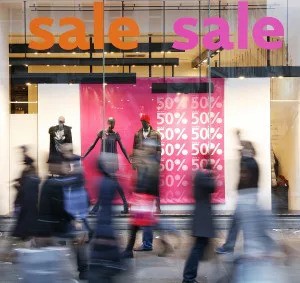
Table of Contents

Spending too much on advertising (and advertising across too many channels) could hurt your chances of generating return on your advertising investment, and spending too little might not allow you to reach as many consumers as you would like.
People counting can help retailers create an effective and affordable “media mix,” or the combination of advertising channels used to meet their marketing goals. This includes event marketing, cause marketing and social media marketing in addition to in-store displays and coupons.
To optimize advertising spending and create a manageable budget, store owners and managers can use their in-store people counting system to evaluate the success of their advertising expenses through the following methodologies:
1. Ecommerce comparison
Retailers with ecommerce options for their customers can also compare their brick-and-mortar traffic to their website traffic. For example, like somewhat of an A/B test, if a retailer runs an in-store-only advertising campaign they can see how much more of that product they sold in-store than online and vice versa.
2. Performance periods
People counting systems can be used to track when advertising materials (this could be a digital signage display, a social media post or an email blast) are used and when the store receives high or low amounts of traffic. Retailers can then analyze these two data sets to determine how they are related and, therefore, how successful their advertising campaigns are.
For example, if traffic increases each time a large cardboard display is used in the front door or lobby, the retailer will know that the cardboard display is a worthwhile expenditure.
A people counting system can be used to evaluate the effectiveness of promotional displays and digital signage – the display of text and images shown on digital screens to advertise or promote products to retail customers – as well as assist retailers in planning the placement and timing of these displays. When used correctly, these advertising methods can be used as effective tools or “call to action” to influence customer behavior.
According to Digital Signage Today, analytics (as they relate to retail displays) will become even more important to retailers in 2014 than they were in 2013.
Specifically, retailers are becoming more interested in determining who is viewing their displays, how long they actually stood and looked at the screen and the impact that the displayed content had on them.
People counting technology can help retailers gain answers to these questions. A counter can be placed directly above the area where advertising materials are being displayed to determine the amount of people who viewed them.
Retailers can use the following methods to gain insight into the success of their displays:
As mentioned, it’s important to make sure that your advertising budget – whether it’s made up of a multi-channel media mix, state-of-the-art digital signage displays or traditional cardboard signs – is both manageable and effective so that you are able to put your store on the map while generating as much return on your investment as possible.
By providing access to advanced retail analytics, people counting systems allow retailers to make smarter decisions about their advertising budget.